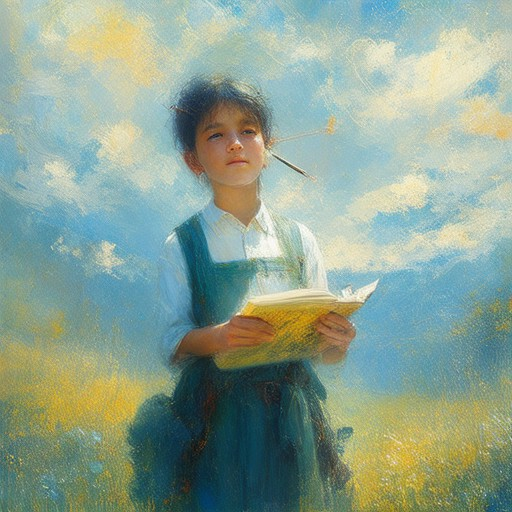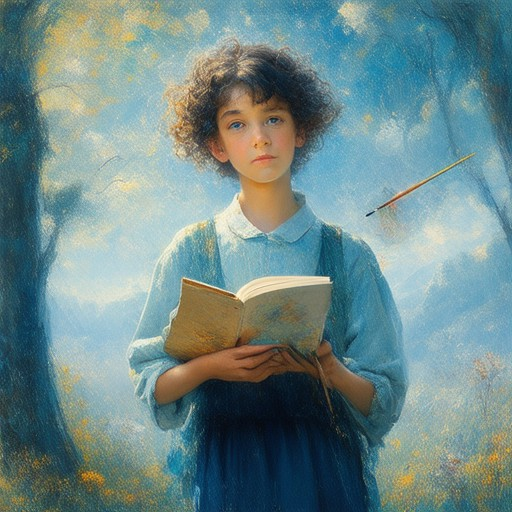Exploring your creative side can be both exhilarating and intimidating, especially when you’re just starting out. For those who feel overwhelmed by the thought of picking up a brush or pencil, beginner art exercises offer a perfect entry point into the world of artistic expression. These structured, guided practices not only help you develop your skills but also build confidence as you see your creations come to life. Whether you’re an adult looking to unwind or a student eager to explore new talents, there’s no shortage of exercises designed to suit every level of ability. From mastering the fundamentals of drawing to experimenting with shapes and compositions, these exercises provide a clear roadmap for growth. By dedicating time to practice, you’ll not only improve your technique but also discover the joy of self-expression. So why wait? Dive into the world of art with these simple yet effective exercises and unlock your inner artist today.

How to Practice Art for Beginners
Practicing art can be a rewarding journey, but it requires dedication, patience, and the right approach. Here’s a step-by-step guide to help you get started:
- Start with Preparation
- Find a quiet space where you won’t be interrupted.
- Set aside a specific time each day dedicated to art practice.
- Gather your supplies beforehand to minimize distractions.
- Set Realistic Goals
- Begin with simple projects to build confidence.
- Set achievable daily or weekly goals, like completing one drawing or painting session.
- Don’t overwhelm yourself with complex projects early on.
- Experiment with Materials
- Try different mediums like pencils, pens, watercolors, or oil paints.
- Experiment with textures and surfaces to explore different effects.
- Don’t fear mistakes; they’re part of the learning process.
- Develop Your Technique
- Practice basic techniques like shading, blending, and perspective.
- Watch tutorials or take classes to learn advanced methods.
- Study masterpieces to understand composition and proportions.
- Seek Feedback
- Share your work with friends, family, or art groups for constructive criticism.
- Join online communities or forums to connect with fellow artists.
- Be open to feedback and use it to improve your skills.
- Explore Different Art Styles
- Experiment with Impressionism, Abstract Expressionism, and other styles.
- Visit museums or galleries to see works by famous artists.
- Take inspiration from nature, people, and everyday objects.
- Stay Motivated and Inspired
- Keep a journal or sketchbook to document your progress and ideas.
- Follow artists on social media or subscribe to art newsletters.
- Set up a personal art space to foster creativity and focus.
- Document Your Progress
- Take photos of your artwork to track your improvement over time.
- Write down what you learned from each session and what you’d like to improve.
- Celebrate small victories to stay motivated.
If you’re looking for resources to help you along, visit Artful Journey for articles, tutorials, and community support. Remember, consistency is key, and every practice session brings you closer to mastering your craft.
What is the Easiest Thing to Draw for a Beginner?
Drawing can seem intimidating at first, but there are simple subjects that are perfect for beginners to practice their skills. Here are some suggestions:
- Basic Shapes: Start with easy-to-draw shapes like circles, squares, triangles, and rectangles. These are great for building confidence and understanding proportions.
- Familiar Objects: Sketch something you see every day, like a chair, a book, or a vase. These are relatable and often have clear lines and angles to follow.
- Simplified Portraits: Try drawing a stick figure of yourself or a family member. This approach simplifies the complexity of human features and focuses on basic forms.
- Abstract Designs: Experiment with abstract art by coloring shapes and lines without worrying about realism. This can be freeing and encourages creativity.
- Patterns and Textures: Practice by drawing patterns on paper, like stripes or dots. This can help develop a sense of rhythm and repetition.
Remember, it’s okay to make mistakes! Every great artist has had their share of imperfections. Keep practicing, and soon you’ll feel more comfortable with your drawing abilities.

First Things a Beginner Artist Should Learn
As a newcomer to art, mastering the fundamentals will lay the groundwork for your creative journey. Here’s a structured approach to help you excel:
- Understand Basic Shapes and Proportions
Begin by mastering essential shapes like circles, squares, triangles, and rectangles. These serve as building blocks for more complex forms. Practice sketching everyday objects to develop an eye for proportions, ensuring figures and settings appear natural and balanced. - Learn Perspective Drawing
Perspective gives your artwork depth and realism. Study how light and shadows interact to create three-dimensional effects. Practice still lifes or landscapes to apply this technique, making your scenes feel more lifelike. - Compose Thoughtfully
Composition involves arranging elements within a frame for maximum impact. Experiment with leading the viewer’s eye through your artwork using lines, symmetry, and balance. Consider focal points and negative space to enhance your designs. - Grasp Color Theory Basics
Understand how colors interact to create mood and harmony. Start with primary colors and learn how to mix them for secondary and tertiary hues. This knowledge will help you choose colors that complement each other and evoke desired emotions.
By focusing on these areas, you’ll build a strong foundation, allowing you to tackle more complex projects with confidence. Keep practicing, experiment, and study from great works of art to continually improve.

What Shapes Should a Beginner Practice Drawing?
Starting with fundamental shapes is essential for building a strong foundation in drawing. These simple geometric forms can help you understand proportions, perspective, and shading basics. Here’s a breakdown of the most recommended shapes for beginners:
- Circle : Begin with the circle as it forms the basis for many organic shapes. Practice drawing circles of varying sizes and positions.
- Square/Rectangle : These shapes introduce symmetry and straight lines. Try sketching them in different orientations and perspectives.
- Triangle : Triangles are great for understanding angles and balance. Experiment with equilateral, isosceles, and scalene triangles.
- Line : Focus on contour lines and how they can define shape and form. Practice lines in different directions and thicknesses.
- Sphere and Cube : Introducing 3D shapes early helps you grasp volume and depth. Sketch these from various angles and lighting conditions.
For each shape, consider practicing the following:
- Draw them in a grid pattern to improve precision and spacing.
- Experiment with shading techniques to add depth and dimension.
- Practice freehand sketches to build confidence and fluidity.
- Refer to real-world objects to study their forms and proportions.
Visit our shape guides for detailed tutorials and exercises tailored for beginners. Mastering these foundational shapes will give you the tools to progress confidently in your drawing journey.
What is the Hardest Thing to Draw for Beginners?
Drawing can be a rewarding skill, but for beginners, certain subjects can be particularly challenging. Here are some of the hardest things to draw and why they can be tricky:
- Facial Expressions : Capturing the nuances of a face, like emotions and features, requires understanding proportions and shading.
- Foreshortening : Drawing figures from a distance or in perspective can be confusing due to the way bodies appear smaller and shorter.
- Drapery Folds : The complexity of fabric folds and textures can be overwhelming for those new to drawing three-dimensional shapes.
- Abstract Ideas : When you’re supposed to draw from your imagination rather than a reference, it can be tough to translate thoughts into a cohesive image.
- Hands : Hands are often tricky because of their natural curves and movements, making it hard to capture detail.
- Movement and Gestures : Conveying motion in a static medium like paper can be challenging, requiring precise timing and placement.
These challenges highlight the importance of practice and study. To improve, consider working from references, studying basic anatomy, and experimenting with different mediums. For more tips and guidance, explore our Beginner’s Guide to Drawing and our collection of Drawing Tips .

What Are the 5 Basic Shapes in Art?
The five fundamental shapes in art are essential building blocks for creating visually appealing and meaningful artwork. These shapes serve as the foundation for more complex designs and are widely used across various art forms. Below is a detailed breakdown of each shape and its significance in art:
- Triangles: Triangles are one of the most versatile shapes in art. They are commonly used to convey stability, balance, and dynamic energy. Equilateral triangles symbolize harmony, while isosceles or scalene triangles can depict asymmetry or imbalance.
- Squares: Squares are another foundational shape, often associated with symmetry and order. They are prevalent in grid-based art, architecture, and design. Squares can also represent simplicity, cleanliness, and modernity.
- Rectangles: Rectangles are elongated quadrilaterals that are widely used in art for their versatility. They can denote horizontal movement, containment, or structure. Rectangles are also integral to compositions in photography and digital art.
- Circles: Circles are timeless shapes that evoke unity, completeness, and infinity. They are frequently used in portraiture, abstract art, and decorative motifs. A circle can symbolize the sun, the human face, or cosmic elements.
- Ellipses: Ellipses are oval-shaped figures that are slightly stretched or compressed. They are often used to depict motion, fluidity, or a sense of proportion. Ellipses can also be used to create a distorted version of a circle.
These basic shapes are not only tools for creating visually appealing art but also convey specific emotions and ideas. By mastering these shapes, artists can develop a strong foundation for their work and experiment with more complex forms. Whether you’re painting, sculpting, or working digitally, understanding these shapes will greatly enhance your ability to communicate through art.
For further exploration of art theory and techniques, we recommend visiting our Art Theory section and discovering works by artists who masterfully use these shapes in innovative ways.




0 Comments